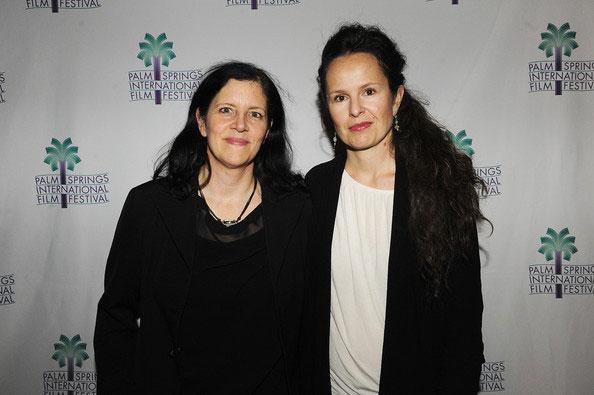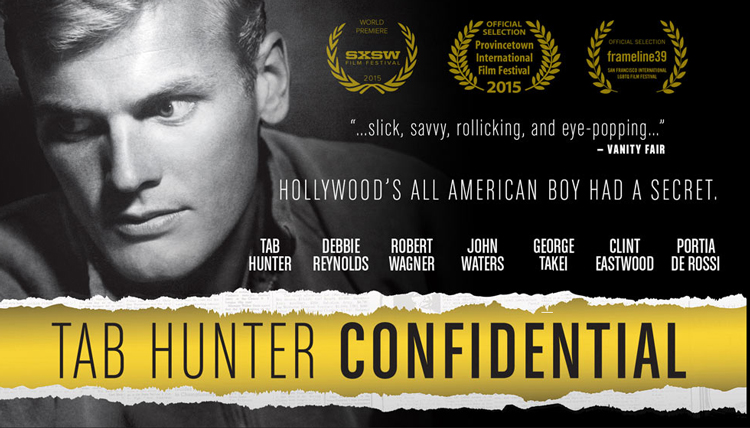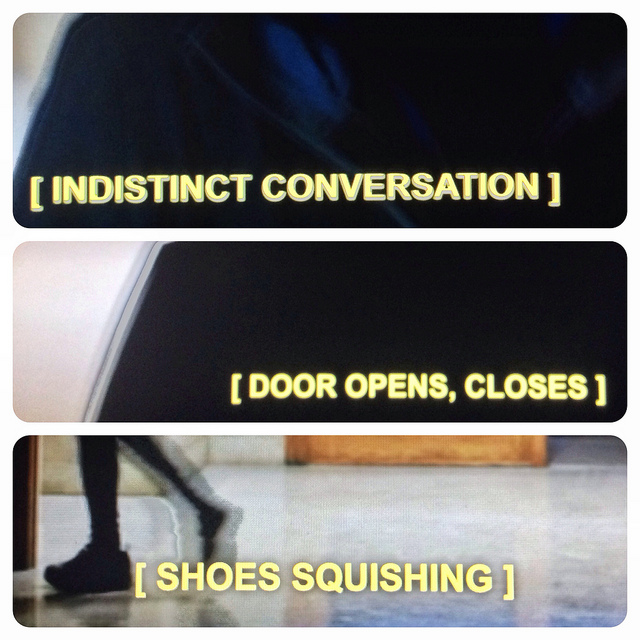
Are DVDs Worth It For DIY Film Distribution?
We are gearing up for a big article on DIY Digital Distribution, which will be posted very soon. In the meantime, we liked this No Film School case study article on DIY DVD Distribution so much that we had to link to it on our blog as well as SM. Enjoy!
Orly Ravid August 17th, 2016
Posted In: case studies, Distribution, DIY
Filmmakers-Direct-to-Platform
We thought we’d start off 2015 with a bit about digital platforms that filmmakers can utilize directly, without giving rights to a distributor and without necessarily having to go through an aggregator. When I say “platform,” what I mean is a place on the Internet that film viewers would go to consume cinema. While filmmakers are always encouraged to distribute off their own websites and social media pages, that is not the subject of this blog. To accomplish DIY off the film’s site and social media pages, filmmakers are encouraged to work with Distrify or VHX, for example. For now we cover the following distinct platforms that filmmakers can directly access: MUBI, FANDOR, VIMEO, WOLFE ON DEMAND, and DOCURAMA (just a tad, and more will be discussed in a few weeks).
MUBI

MUBI is a curated video-on-demand subscription service.
MUBI describes its offering as a hand-picked selection of the best cult, classic and award-winning films from around the globe. “Every day MUBI’s in-house film experts select a great new film and you have 30 days to watch it. So there’s always 30 brilliant films to enjoy. We have a huge audience of passionate cinephiles from every corner of the planet who watch, rate, review and share great cinema.” See more at mubi.com/about.
Q: How film viewers can access it?
The service is the only subscription service available worldwide (193 territories). So whether you are in Venezuela or Vancouver you’ll be able to experience a beautiful collection of 30 hand-picked films. MUBI works on the web, mobile devices, internet-connected TVs and games consoles. On MUBI’s mobile apps you can download films and watch offline.
Financial model of platform How audiences pay (if at all) and how do filmmakers make money:
MUBI brings one new film to the platform every single day. Each film plays on the platform for a 30-day window. Revenue is split 50/50 with the filmmaker (or whomever is the rights holder) based on views over the 30-day run. A MUBI membership costs around $4.99 USD in most countries for a month or £2.99 in the UK or €4.99 in the EU.
Deals Offered to Filmmakers:
MUBI typically licenses films for a 2-year period, non-exclusive. They license by territory, but also do global deals or groups of territories.
How Films Get Onto MUBI:
MUBI takes films directly from filmmakers and also from studios, distributors and aggregators.
Q: What does your company do to drive audiences / consumers to this platform?
“Beyond the normal channels (digital, social, offline) we work in partnership with festivals and organisations [organizations] like Cannes, Berlinale, MoMa, AFI, Lomokino, Picturehouse Cinemas, we curate seasons and retrospectives, host screenings, run events… the list goes on! Also, in the UK (one of our focus countries) we have a mutli-level advertising campaign launching in 2015.”
Revenue ranges:
[This question is almost never answered by any businesses so don’t hold it against MUBI for not answering.]
Speaking from experience, however, we at TFC have enjoyed seeing hundred of dollars that eventually added up to some small version of thousands for a film that did not do better business anywhere else. In fact, I would say MUBI was a source of revenue that was particularly useful for a smaller art house film that would not be sought out on the more commercial platforms such as iTunes.]
What MUBI does to market films:
“We have huge communication channels offline and off. When a title is selected as the ‘film of the day’ all these channels are directed towards promoting that film. The difference with MUBI, for the filmmaker, is that instead of your film sitting in a library of a thousand films, your film is one of just thirty. Every day we send out a dedicated ‘Film of the Day’ email to hundreds of thousands of people globally, the email features “Our Take” – the reasons why we selected the film and why it’s worth watching. We build editorial context around films rather than leaving them fighting alone. We run one of the most respected online sources for film criticism, Notebook. So if your film is on MUBI it’s less about creating a long-term revenue stream and more about exposure for the film in a targeted, well-contextualised burst which can be a great complement to (or continuation of) a theatrical or DVD release. A film is on MUBI for 30 days but for those 30 it is the centre of our attention. It works for the audiences and filmmakers alike, great films can find people that want to watch them.”
Special initiatives MUBI has brewing (this is from December 2014):
“In the UK we’re currently showing a Godard retrospective, and right now in the US we have a Joe Swanberg double bill.”
New from MUBI: iPad and iPhone App
Follow MUBI on Facebook: facebook.com/mubi
Follow MUBI on Twitter: twitter.com/mubi
FANDOR

Fandor can be accessed via apps available through iTunes (iPhone, iPad) and Google Play (Android phones and tablets including Kindle Fire), and as a channel on Roku.
Fandor offers an extensive and rich library of over 6000 films, from around the world, in over 500 genres, and of all lengths, handpicked for people who love the transforming experience of great cinema. Fandor fulfills the promise of an online cinematic experience, marrying curation with contextual information for a global community of film lovers and filmmakers.
Fandor Availability / Accessibility:
Fandor is available in the US and Canada, accessible anytime to subscribers.
Financial model of platform—How do audiences pay (if at all) and how do filmmakers make money:
Fandor members subscribe on an annual ($90) or a monthly ($10) basis. Both subscription types offer a 2-week free trial. Subscription revenue is shared, with 50% going to the film rights holders, divided based on availability and audience viewership.
Deals Given to Filmmakers:
Because our model is a revenue share, the amount that filmmakers earn will vary based on viewership. 20% of the shared revenue is split among all films on the platform; the remaining 80% is allocated based on seconds of viewing to individual films.
Fandor Gets Films Direct From Filmmakers And Distributors:
Fandor has partnerships with hundreds of distributors and approximately 125 filmmakers (direct).
What Fandor does to drive audiences / consumers to its platform:
“We have an extensive marketing program that includes advertising, social outreach to over 160K fans, public relations, personalized email and integrated promotional campaigns. We also have a network of 4 blogs that addresses Fandor customers (The Fandorian), film aficionados (Keyframe), the film industry (Hope for Film), and filmmaker-to-filmmaker (Hammer to Nail).”
Fandor’s response to our request to share revenue ranges for films on its platform:
“We’re a private company and typically don’t share our financials and membership data.”
Special initiatives Fandor has brewing:
“We have two initiatives currently targeted to film festivals (Fandor|Festival Alliance) and to filmmakers (FIX). These initiatives are part of a larger effort to build relationships across the film world as part of a larger mission to advance and preserve film art and culture.”
See the release explaining these…
An example of a Fandor marketing campaign:
“Probably the best example is the Shocktober campaign we did for October. We showcased a different horror film each day through the month of October. The campaign was integrated across our ads, our website, our social networks, and email. We also did two video trailers. I’ve attached a .gif we used for social and email, and following are links to the videos. The campaign culminated in a day/date release of the remastered THE CABINET OF DR CALIGARI on Halloween.”

The Sin Within
Stranger Danger
VIMEO ON DEMAND
Browse available films and shows at vimeo.com/ondemand
Sign up vimeo.com/creatorservices/ondemand

Vimeo allows one to distribute films, series, and videos with all the power of Vimeo, its community, and its legendary
HD player. Anyone can use Vimeo On Demand – from established and first-time filmmakers to creators of video tutorials or video performances. “Vimeo On Demand helps creators distribute feature films, documentaries, series, episodes, TV shows, instructional videos, and more. It puts all the control in the hands of creators, who can choose to offer buy and rent options at their own prices, sell on Vimeo and their own website, worldwide or in select countries.”
Accessibility:
Vimeo On Demand is available worldwide and allows viewers to watch films on pretty much any screen, from computers and tablets to connected TVs, all in full HD (even 4K!). Vimeo On Demand is a global, open platform where any filmmaker can sign up and start selling their videos.
Financial model of platform:
Vimeo On Demand offers creators the ability to sell their movies to rent or own. “Viewers pay by credit card or PayPal. Creators earn 90% of the net revenue from every sale—which is the best deal in the film business!”
Direct-to-Filmmaker Distribution:
Vimeo accepts films first-time filmmakers and distributors.
Q: What does your company do to drive audiences / consumers to Vimeo?:
“Vimeo has 170 million monthly visitors and more than 30 million registered users. We regularly promote curated selections of movies from Vimeo On Demand to this massive audience on-site, via email and on social media. We also have ongoing paid marketing campaigns and publisher partners working to bring viewers to Vimeo On Demand.”
Revenue:
“Vimeo On Demand has been proud to power some of the most successful direct distribution releases ever. We are not allowed to share our users’ revenue data.”
What Vimeo does on marketing front for its films:
“Our Audience Development team is actively working to market films via our own platform as well as through digital advertising, social media marketing, and a growing list of publisher partners. Vimeo On Demand is the only direct distribution platform that brings a built-in audience and markets films on the platform.”
[NOTE: My colleague David Averbach has informed me that there is a way, for filmmakers who are allowed to offer VOD off their film’s website, but not other external sites, to hide Vimeo On Demand videos from vimeo.com.]
WOLFE ON DEMAND

The worldwide LGBT digital movie-watching platform!
Accessibility / Availability:
The platform showcases more than 150 films, more than 100 of which are available worldwide.
Financial model:
TVOD (Transactional Video on Demand via Internet) and Streaming (rental)
$3.99 streaming and $14.99 download for features.
$2.99 streaming and $9.99 download for docs.
Revenue to Filmmakers:
WOD split is 50/50. Wolfe have also entered into a strategic relationship with Vimeo and WOD will soon live on their platform. Wolfe’s site is powered, in part, by Distrify which takes a cut of revenues, as will Vimeo. Wolfe also notes that the partnering with Vimeo will also involve additional marketing opportunities.
Direct with Filmmakers and Distributors:
“We work with all kinds of filmmakers directly as well as distributors.”
Q: What does your company do to drive audiences / consumers to this platform?:
“Wolfe has been in the business of releasing LGBT films since 1985. With 30 years in the business we have the experience, relationships community good will and connections to help connect films with the audiences who want to see them. We utilize our mailing lists, social media, advertising, PR, community outreach and creative marketing as well as a wide array of other marketing tools and strategies. Wolfe’s strength is in consumer marketing. We dedicate considerable resources to unique programs domestically and abroad to drive traffic to WolfeOnDemand.com.”
Revenue Ranges:
[Like the others, Wolfe did not disclose.]
Special initiatives Wolfe has brewing:
Yes, stay tuned for some exciting news to be announced in late January 2015.
DOCURAMA
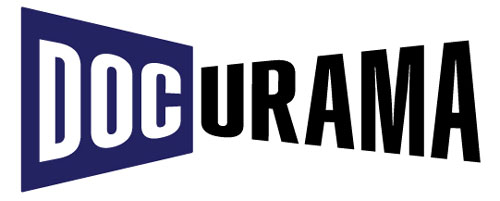
We’ll be covering this one in a few weeks as information is being updated…
As the name suggests, this platform focuses on documentaries.
The channel is available on iOS, Roku, XBox, Amazon Fire, Western Digital, Opera, to name a few.
We will send proper information about Docurama in a few weeks. For now, TFC recommends working directly with these platforms when they are a fit for your film. We will update about other platforms as we learn of them, if we think they are worthy of focus.
Happy direct digital distribution,
The Film Collaborative
Orly Ravid January 14th, 2015
Posted In: Digital Distribution, Distribution Platforms, DIY, Vimeo
Tags: digital platforms, Distrify, DIY distribution, Docurama, Fandor, film distribution, film distribution revenue, independent film, Mubi, subscription VOD, VHX, Vimeo, Wolfe on Demand
TFC’s Film Distribution Takeaways of 2014
As 2014 draws to a close TFC reflects on five (5) film distribution lessons from 2014 in anticipation of our 5th Anniversary at Sundance 2015.
1) DIGITAL TECHNOLOGY POSITIVELY IMPACTING FESTIVAL & OTHER PUBLIC EXHIBITION DISTRIBUTION BY REDUCING COST AND HEADACHE:
As we have seen every year for several years now, we are experiencing additional technological revolution that will change our business forever. In 2014, we said adieu to the preview DVD (for festivals, distributors, exhibitors, press etc.) in favor of the online screener link. We said goodbye to the HDCAM and the final nail in the coffin of the Digibeta. We struggled with the problems of the DCP and all its imperfections and inevitability (at least for a few more years). And we are RIGHT ON THE VERGE of the greatest evolution we will experience in recent years, which will be full delivery of films for exhibition via the Internet…whether it turns out to be Vimeo or Drop Box or iCloud or other. If we can remove the SHIPPING part of the independent film business, filmmaker (and distributor) profits may greatly increase without that part of the equation. We are almost there now…
2) THE HARD-TO-ACCEPT REALITY OF MARKETING SMALL FILMS:
As much as all of us at TFC have talked about the need to identify and target niche audiences, the ones who would be the most interested and excited to see a project because it speaks to a belief or lifestyle or cause, most indie filmmakers still aren’t heeding this advice. Of the consultations I had this year, most were with filmmakers who made micro-budget dramas with no notable names and were without prestigious festival accolades. They still believed a distributor would be willing to take on their project and give it a full release. Even those who realized this wasn’t going to happen found the financial burden associated with the kind of release they envisioned too difficult to bear, especially because they were likely to never see that money again (hence why distributors weren’t willing to take on the burden).
If you’re going to work small, you need to think small, but deep. You NEED a small, but highly passionate audience that you can reach given the resources and assets you have. Their enthusiasm will help you if you can harness their attention early on. I won’t say this is easy, but before you embark on a project that could take thousands of dollars and years of your life, first think about how you will approach the audience for your work and how you will maintain it on a consistent basis. If you think someone else is going to take care of that for you, you haven’t been paying attention to the shifts in the indie film marketplace.
If you think someone else is going to [attract and maintain a niche audience] for you, you haven’t been paying attention to the shifts in the indie film marketplace.
3) WHEN BROADCASTERS WANT STREAMING RIGHTS – WHAT TO DO?:
Increasingly, broadcasters are seeking streaming rights along with traditional TV broadcast rights and they have holdbacks on streaming and SVOD at a minimum, and often on transactional digital (DTO/DTR) too. For sure they limit / prohibit cable VOD. As a filmmaker, you only have leverage to demand a higher licensing fee if your film is a hot commodity. Otherwise, while online (or in-app) streaming will possibly gut your transactional VOD sales, you can’t beat the reach a broadcaster can give to your film. Think very hard about turning down a broadcast deal that includes online streaming. Will your iTunes/Amazon/Google Play sales really be so much if very few people have heard of your film? iTunes and Amazon are not going to promote your film like a broadcaster would.
Then again, which broadcaster is it? How big is its reach? How much publicity and marketing will you get? How much digital distribution are you barred from and for how long? Not all types of films make the same money on all types of platforms so does your film demand-to-be-owned? or is a renter, at best. Not all platforms will even accept all films (e.g. all Cable VOD, Sony Playstation, Netflix). Is yours one that will digitally succeed broadly or narrowly, or at all? Will Netflix pay 6-figures like in the good ole days or a lot less, or anything? Do you have a direct-to-fan distribution strategy that you can employ in tandem so as to not need to rely on other digital platforms in the first place?
Or if you want to try it all, still, your strategy would privilege the direct sales anyway. Which is better for your goals, a film that gets national broadcast airings or a film that turns down that opportunity only to be buried in the iTunes store? Or would it not be buried? Only you can answer this as not everyone’s goals are the same and not everyone’s opportunities / potentials are the same. As we have always said, knowing your film’s ACTUAL potential and combining that with your HIERARCHY OF GOALS will help you answer these questions and decide your distribution strategy.
And while it may feel like you are giving up revenue by allowing your film to be streamed (hopefully for a limited time!) through a broadcaster’s portal, you may find this is a good career move for your next feature because people will be familiar with your work having had the opportunity to see it.
4) THE HEAVY BURDEN OF THE NARRATIVE WITH NO NAMES:
Several of us opined about the challenges facing narratives with no names.
The emerging mega strength of incredible television series available everywhere threatens narrative film even more than before, and of course, especially the smaller indie fare.
We have seen time and again how narrative dramas or comedies almost always fall flat in sales unless they have very strong names and not just C-list or B-list names. Of course there are exceptions to this rule and Sundance can be part of that, or a hot director, or simply just an exceptional break out film. But too many filmmakers look to those as the model when they are the anomaly. The pattern we, at TFC, see repeated too often is the making of a decent or good but not exceptional narrative with names that are okay but not great and then wasting time trying to make a big or even medium sale. It just does not happen. Money and time are lost and careers often not made. Again, there are exceptions, and of course certain niches such as LGBT may be one of them, but we advise discerning between passionate optimism and sheer folly.
5) TRANSPARENCY—The Kale of Film Distribution:
The big takeaway from 2014 about TRANSPARENCY is that, on the one hand, it has become a sort of new, hip standard—something cool and good, like eating kale—that more honest distributors practice and/or shadier ones pretend to because it’s more expected. On the other hand, however, we were surprised at how many filmmakers still resist it—resist sharing their data, even anonymously. And to that, all we can ask is, what are you afraid of? It’s meant to be good for the filmmaking community as a whole but maybe individually folks are scared about what the truth will bring. And some folks just want to eat bacon. We get it. Still, we encourage sharing the real data for the greater good and we will keep on working to inspire and facilitate more TRANSPARENCY.
We at TFC wish you and yours a delightful new year and we are looking forward to being even more of service to filmmakers in 2015!
Orly Ravid December 29th, 2014
Posted In: Digital Distribution, Distribution, DIY, Marketing, Uncategorized
Tags: audience building for films, broadcasters, DCP, direct-to-fan film distribution, distribution strategy, DVD, film distribution, film exhibition, Film Festivals, independent film distribution, independent film with no names, The Film Collaborative, Vimeo
Self financed Film Distribution in the Context of European Territories
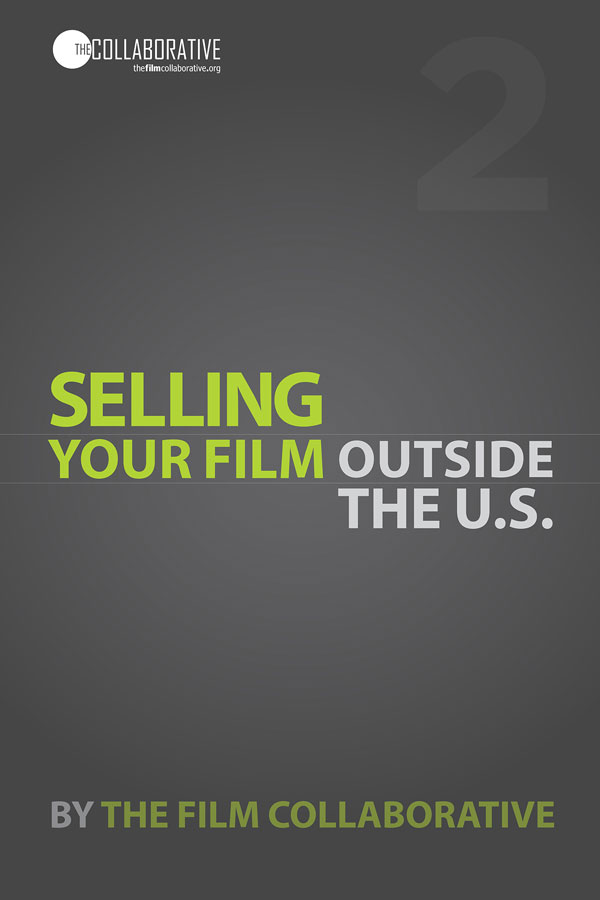 Last May, TFC released the second book in our series called Selling Your Film Outside the US. As with everything in the digital space, we are trying to keep track of a moving target. Netflix has now launched in France, Germany, Austria, Switzerland, Belgium and Luxembourg. iTunes continues its transactional VOD domination by partnering with Middle East film distributor Front Row Filmed Entertainment to give Arabic and Bollywood films a chance to have simultaneous releases in eight countries: UAE, Egypt, Bahrain, Qatar, Oman, Lebanon, Jordan and Kuwait. Amazon has just launched several new original series in the US and UK, including critical darling Transparent, to a line up that includes returning series Alpha House and Betas.
Last May, TFC released the second book in our series called Selling Your Film Outside the US. As with everything in the digital space, we are trying to keep track of a moving target. Netflix has now launched in France, Germany, Austria, Switzerland, Belgium and Luxembourg. iTunes continues its transactional VOD domination by partnering with Middle East film distributor Front Row Filmed Entertainment to give Arabic and Bollywood films a chance to have simultaneous releases in eight countries: UAE, Egypt, Bahrain, Qatar, Oman, Lebanon, Jordan and Kuwait. Amazon has just launched several new original series in the US and UK, including critical darling Transparent, to a line up that includes returning series Alpha House and Betas.
But what does DIY Distribution mean in the context of European territories? The following is an excerpt included in the book:
Here are a few tips for any filmmaker who is thinking about doing digital distribution in general, but especially in multiple territories:
-If your film is showing at an international film festival, ask if they are producing subtitles, and, if so, negotiate that the produced file be part of your festival fee. It may need to be proofed again or adjusted at a subtitling and transcription lab later on, but as a first pass it could prove very valuable down the road. See more about the kind of file you need in this post;
-When you are producing your master, create a textless version of your feature. Apple and probably other platforms will not allow external subtitles on any films that already have burn-ins. If your film, for example, has a few non-English lines of dialogue, instead of burning-in English subtitles into your film, a better method would be to create an external English-language subtitle file (separate from closed captioning) in a proper format and submit it with your master. Different aggregators may require different formats, and if you are going to a Captioning/Transcription/Translation Lab to do your closed captioning and subtitling work, be smart about which questions you ask and negotiate a price for everything, including transcoding from one format to another because you may not know exactly what you will need for all your deals right away.
Subtitles need to be timed to masters, so make sure your time code is consistent. When choosing a lab, ascertain whether they are capable of fulfilling all your current and future closed captioning and subtitling needs by verifying that they can output in the major formats, including (but not limited to) SubRip (.srt), SubViewer 1 & 2 (.sub), SubStation Alpha (.ssa/.ass), Spruce (.stl), Scenarist (.scc) and iTunes Timed Text (.itt);
-You may want to band together with films that are similar in theme or audience and shop your products around as bundled packages. Many digital services, including cable VOD, have thematic channels and your bundle of films may be more attractive as a package rather than just one film;
-Put the time in toward building your brand and your fanbase. Marketing still is the missing piece of the puzzle here. As it gets easier and easier to get onto platforms, so too does it get more difficult for audiences to find the films that are perfectly suited to their interests. This is especially true when talking about marketing one’s film outside one’s home territory. If you are accessing platforms for your film on your own, YOU are the distributor and the responsibility of marketing the film falls entirely to you.
To download a FREE copy of the entire book, complete with case studies of films distributed in Europe, visit sellingyourfilm.com.
Sheri Candler October 15th, 2014
Posted In: Amazon VOD & CreateSpace, book, case studies, Digital Distribution, DIY, iTunes, Netflix
Tags: Amazon, Digital Distribution, Europe, film bundles, independent film, iTunes, Middle East, Netflix, Selling Your Film Outside the US, Sheri Candler
Battle for festival supremacy-TIFF vs Sundance
A knockout victory
The Toronto International Film Festival (TIFF) is just behind us and films submitted for Sundance are a month away from their acceptance call. While the difference between Toronto/Sundance and SXSW/Tribeca is pretty clear, what separates Toronto from Sundance might surprise you.
I looked at the data from the last two year’s of each festival and came up with one big conclusion. Sundance is the bigger festival for North American distribution on just about every measurable level I could come up with.
How could this be? Toronto is the more mainstream fest, right? Not so much.
Let’s start with some comparative info that would clearly skew things in Toronto’s favor:
-62.5% of films from TIFF 2013 have US distribution
-81.3% of films from SUNDANCE 2014 have US distribution (and remember this was accomplished in 9 months compared to TIFF’s 13 months)
But what about the box office performance?
Sundance has a higher percentage of films that grossed over $1 Million, $500,000, and $100,000 than TIFF. This is including non world premiere films which would give TIFF an advantage.
But what about the size of the deals? Isn’t TIFF where the big money is? Hardly
11 films from TIFF 2014 generated 7 figure deals, 11 films from TIFF 2013 did the same. The difference is TIFF screens 2.5x as many films. Even eliminating the # of films with US distribution before TIFF started and cutting out foreign language films, producers were still twice as likely to get a seven figure deal at Sundance.

The Documentary King
TIFF is a much more diverse slate, but sorely lacking in docs. Roughly 1/3 of Sundance films are documentaries, while only about 1/10 of TIFF films are. Even then, docs were more likely to get distribution out of Sundance than TIFF and by a very wide margin. 90% vs 52%. The majority of docs that made the Oscar shortlist came from Sundance, as have a majority of nominees in the last five years.
Foreign Language Problem
In contrast to their #1 status as a place to launch documentaries, Sundance’s World Cinema lineup is far from a sure bet.
While only 41% of Sundance 2014 World Dramatic films have US distribution, that percentage is still higher than foreign language films that screened at TIFF. The % is higher even if we include all foreign language films and not just world or international premieres at TIFF. So even in Sundance’s weakest area your odds are still better than at TIFF.
That all noted, TIFF receives some high profile foreign language films that will ultimately generate bigger deals and make a dent in the US box office, but those are few and far between in an already very unprofitable arena.
So What Does a TIFF Screening Mean?
TIFF does two things that Sundance does not. It functions as a worldwide market and it is a frequent must for awards buzz films.
Sundance films do better on a domestic level. TIFF films are more likely to generate some form of worldwide interest and the majority of major worldwide players are in attendance.
Sundance has an international presence, but nothing on the same level of going into the Hyatt and taking the United Nations tour of film booths.
Sundance also doesn’t take studio films, which TIFF does. I would argue this is part of the problem TIFF films face. The competition for attention is so much higher with studio films in the mix that many simply get lost in the shuffle.
The DIY Mindset
In the age of DIY options at very low cost, one has to wonder why so many films at TIFF didn’t take advantage of Vimeo’s $10k offer in 2013. In fact, 55 world premieres still lack US distribution, which means with 100% certainty they turned down $10k to chase a pipe dream of success.The worldwide sales agent aspect at TIFF makes it a lot harder to discuss DIY options, but things are slowly starting to change.
This year was the first time multiple filmmakers were willing to openly discuss DIY options for release with me during the fest.
Sundance has their Artist Services program and some very notable DIY success stories (Detropia, Indie Game: The Movie, Upstream Color etc). But the biggest difference is Sundance is early in the year. There are tons of festivals left with which to build exposure going into release.
While it is almost always advisable to hit the festival circuit running, if one didn’t do that at Sundance, it’s easier to rev up the process than at TIFF when the year is nearly finished. If you don’t pursue additional festival screenings right away, your film would play TIFF and not screen anywhere until the following year. Remember there aren’t a lot of festivals in November/December. By that point people have moved onto Sundance and don’t even remember what they saw at TIFF.
The Take Away
Don’t buy into the hype about a festival without carefully looking at the info. While many Oscar winners have come from TIFF, the stats don’t lie. For domestic success, your odds are better with Sundance. This doesn’t make TIFF a bad festival, it’s easily the 2nd best launch pad in North America, but it’s important to know that your film is more likely to get a distribution deal out of Tribeca than TIFF if you have a documentary.
The consensus from this year’s TIFF was that there weren’t too many hidden gems, but with 288 features would any of us even know? At a certain point size is a liability and I think that TIFF needs to shrink its slate or get more creative when it comes to highlighting world premieres without big names.
Reminder: EVOLUTION OF A CRIMINAL & THE CIRCLE
The Spike Lee executive produced Evolution of a Criminal opens in NYC Friday October 10th at IFC Center. They are also crowdfunding to support their nationwide theatrical release. https://www.kickstarter.com/projects/948417025/evolution-of-a-criminal-theatrical-release
In partnership with Wolfe Releasing, TFC Direct will be theatrically releasing Switzerland’s Oscar entry, The Circle. It opens November 21st in NYC and will be expanding through beginning of 2015.
Bryan Glick October 9th, 2014
Posted In: Distribution, DIY, Film Festivals, Publicity
Tags: Bryan Glick, documentaries, film distribution, Film Festivals, film sales, international films, Sundance Film Festival, The Film Collaborative, Toronto International Film Festival
DCP failure rate is extraordinarily high. Should you make one?
In two prior posts, I chronicled how rapid technological change was impacting the exhibition side of independent film, and how this was affecting filmmakers and their post-production and delivery choices. In January 2013, in a post called “The Independent’s Guide to Film Exhibition and Delivery” I discussed the rise of the DCP in independent exhibition, and the potential dangers it posed to filmmakers on a budget. And later that year, I posted “Digital Tape is Dead” in which I gave further evidence that it was possible to resist the rise of DCP…at least for the time being… and the reasons for doing so.

photo credit: Bradley Fortner via photopin cc
It’s a little over a year later, so I am returning to the topic to take stock of what a difference another year makes. And as always, the main goal of this exercise is to help you, as filmmakers, to make the best post and delivery choices in finishing and exhibiting your films.
Of the many things that The Film Collaborative does, one of our core services is booking our clients’ and members’ films in public venues all over the world – including everything from film festivals, traditional theatrical venues, universities, art galleries, etc. Every year, this work hits a peak frenzy in October, which is unquestionably THE month of the year with the largest number of film festivals. By simply comparing our booking format totals from October 2013 to October 2014, I can see that once again the landscape of booking has evolved substantially in the last 12 months.
BOOKINGS IN OCTOBER 2013 (total 195 booking engagements):
BLURAY: 144
DVD: 25
DCP: 12
HDCAM: 10
Digibeta: 2
Quicktime File: 2
BOOKINGS IN OCTOBER 2014 (total 268 booking engagements)
BLURAY: 162
DCP: 84
DVD: 12
HDCAM: 6
Quicktime File: 4
Other than the fact that we are obviously a busy company (!), the main takeaway here is that the DCP’s slow and seemingly inevitable rise to the top is continuing, although the actual majority of venues (especially in the U.S.) are still trying to cut costs by the use of BluRay. In Europe, the DCP has already overtaken all other formats, and is nearly impossible to resist if you want to play in any reputable festivals or venues. And after DCP and BluRay, all other formats are now nearly dead worldwide, at least for now.
There are many reasons why this isn’t good news for independent filmmakers (which we’ll go into)…but the first and most obvious problem is that all of the filmmakers we work with are still making multiple HDCAMs! From the data above it is clear, STOP MAKING HDCAMS PEOPLE! I know many companies that have stopped producing them entirely, and are providing only on DCP, BluRay, and DVD.
Usually, an independent filmmaker’s first worry about DCPs is the initial price – indeed it is the most expensive exhibition format to make since the 35mm print. However, the good news is that it has already dropped in price quite a bit from 2013…now if you look around you are sure to be able to get an initial one made for $1,000 – $1,500 (compared to around $2,500 a year ago).
Now there is the really weird situation with the subsequent DCPs…and what you should pay to make additional copies. If you’ve seen DCPs, you’ll know that they often come in these elaborate and heavy “Pelican Cases” with a “Sled” hard drive with USB adaptors and power supplies. That’s the kind the studios use, and they will usually run you around $400 per additional DCP…which is expensive.
The strange thing is that every tech-savvy person I know tells me that this is all window-dressing, and that a regular “Office Depot style drive” USB 3 Drive for $100 serves exactly the same purpose and is actually a bit more reliable since it has less moving parts. Add to this the simple charge for copying the DCP (for which our lab charges only $50), and you’ve got subsequent DCPs at only $150 each…which of course is even cheaper than old tape-based formats like HDCAM and Digibeta.
If someone out there knows why one SHOULDN’T go with the more inexpensive option, I’m all ears. Call me, tweet us @filmcollab, leave a comment on our Facebook page! ‘Cause I haven’t heard it yet.
Of course, its still not a super-cheap $10 BluRay, but the truly annoying thing about the DCP and all its solid state technology and its fancy cases is that it is HEAVY, surpassing everything except old 35mm prints in weight. As a result, the cost of SHIPPING becomes a major issue for independents, and more than $100 every time you send since you obviously aren’t going to put your pristine file in regular mail. If you’ve been booking and playing films for a long time, you’ll know that $100 in shipping is often the difference between a profitable screening a not-so-profitable one…and so the cost adds up quickly.
It’s truly the cost of shipping that makes me sad that the BluRay is doomed as a major exhibition format. At one point, when filmmakers and distributors made “P&A” assessments for their films, the biggest cost in the “P” analysis was the cost of shipping heavy prints. For a brief and shining moment….from like mid 2013 to mid 2014… the lightweight BluRays took that part of the “P” out of the equation entirely…and that sure was nice.
But the (dirty and secret) truth is that COST isn’t the main problem with DCP. It is the RELIABILITY of the format. The horrible fact is that DCP is the most unreliable format in terms of playability that we have ever had….bar none that I can think of. BluRays used to have the reputation for failing often, but they were easy to include a back-up copy with, and they have drastically improved in the last two years such that they almost never fail. DCPs, however, now fail ALL THE TIME, at an alarming rate, and for an alarming number of reasons.
Rather than go into the deep tech-geek reason for DCP failures in venues all over the world…I am going to copy a few recent emails from labs, festivals, and venues I have been communicating with in the last couple of weeks. I promise you…all of this is just in the last two weeks! And all of these are all different films and different DCPs!
[EXAMPLE] On September 16th, XXXX wrote:
So, bad news guys, we couldn’t access the hard drive on this DCP, so it’s our thoughts that it is dead.
[EXAMPLE} On September 18th, XXXX wrote:
Nothing over here is recognizing this DCP. The drive appears to be EXT3 formatted and I think this may be why it’s not recognizing as a usable hard drive. Generally, we use NTFS and EXT2 formatted drives. This one does have a bluray backup, but if you can try to get us another DCP, that’d be cool.
[EXAMPLE} On September 17th, XXX wrote
We just got the DCP and the sled was loose and the final screw holding it came off. It’s the plastic thing that pops out. Just now I noticed that most of the screws on it are loose. It won’t play because I think we need to replace the screws?
[EXAMPLE} On September 22,, XXXX wrote
We are facing difficulties with the DCP as our Server does not seem to recognize the drive. We have spoken to your lab and we think it’s because our server cannot recognize Linux Files. We have about 100 DCPs in our festival, and this is happening to about 10 of our films. Can you offer any advice?
It is this last example that really cracks me up….if you happen to know anything about DCP you know that Linux was chosen as the best format for DCI-complaint files. So the fact that a festival could not read Linux, but could still read 90 out of 100 of their DCPs is absolutely mid-boggling, as I thought Linux was in fact the common denominator.
But I digress.
As filmmakers, is any of this what you want to be doing with your time? Do you really want to know about EXT3 and EXT2, and do you seriously want to worry about replacing loose screws on a drive? Do you want to reduce your whole filmmaking experience as to whether a venue can read Linux or not? Do you have time for this?
Just this weekend, we had a screening in North Hollywood where the sound on the DCP went out for the last 5 minutes of the film, all the way through the credits. Is this acceptable? I thought not.
It was better before. We don’t like to think that evolution is like this….getting worse rather than better….but in truth it often is. And this is one of those times.
The truth is, I will never trust this format. The DCP was created by a 7-member consortium of the major multinational studios called the Digital Cinema Initiative (DCI). It represented only the major studios…and created a format best suited to their needs. They have since adapted all the major venues to their needs. Is it any wonder that these needs do not represent the needs of independent filmmakers? Do we have any doubt that that any “consortium” would actively seek to suppress the needs of its competition? It created encryption codes only they can functionally work with. It put all the rest of us in danger, in my opinion. Let’s just talk about their unworkable encryption technology if we want to start somewhere. KDMs on independent films are a joke….leaving us more vulnerable to piracy than ever.
So, here is why the “P” matters more than ever. And why there is still GREAT reasons to hope. Just when you thought I was writing a depressing post, I am going to flip this b*itch. And I mean “b*itch” in the best manner possible.
The truth is…the age of cloud based computing, the no shipping, the no P in “P&A” reality is finally nearly upon us.
The truth is…it will not be long before we can use cloud-based services to deliver our films to venues all over the world. Of course, it is happening now….but it is not a mature system yet. But my guess is that it WILL be very soon. Definitely less than 5 years.
With all the new services like Google Drive, WeTransfer, DropBox, Vimeo, etc all rapidly evolving…..we are only months (if not years) from really delivering our films without help from middle men like Technicolor and FED EX. And that will be a good thing. A great thing really. I believe it will increase our indie profits many fold.
Already, every single day, I have numerous festivals asking me to DropBox them the films we are working with. In truth, I haven’t figured out really how to do that yet in quality levels I am comfortable with that also make financial sense. I am in constant dialogue with our lab and our tech people as to how to make this work in terms of uploading time, server space, and quality of presentation.
But it is clear to me that it IS happening over time….if anyone knows the secrets…again, I am ALL ears! Please call me! Because I truly believe that when we can remove the P from the P&A equation….and I mean truly remove it such that any number of prints and all shipping can be eliminated as easily as sending someone a link to an FTP or whatever…..we will re-enter an age where independent film distribution will make real financial sense. Imagine that, for a moment.
And the weirdest thing is I think it is truly happening… any day now.
NOTE: Step 4 in this blog series will be an analysis of how to deliver your film digitally and via The Cloud. We aren’t there yet….BUT that is what I will cover in the next post of this series. Hopefully new updates will happen by the end of the year!
Jeffrey Winter October 1st, 2014
Posted In: Digital Distribution, Distribution, DIY, Film Festivals, Theatrical
Tags: BluRays, DCP, DCP failure rate, Digital Cinema Package, DVD, film festival distribution, HDCam, Jeffrey Winter, Quicktime, The Film Collaborative, theatrical distribution
Is this mic on? Stop making these well worn filmmaking mistakes
I’m back to blogging after a long (2 years!) hiatus in law school and the first thing I want to discuss is something that frustrates us about the filmmaker consultations we give. At The Film Collaborative (TFC), it is shocking how much of what we said 5 years ago when we first started the company and what we continue to say over and over again has not trickled down and stuck to filmmakers.
While we like to think that we are changing minds and getting filmmakers to be more proactive about making their own decisions regarding distribution of their films, sadly, this doesn’t seem to be the case in the majority. The same issues keep coming up (no you probably won’t be getting a 7 figure deal for distribution…no your film is not a fit for Sundance…no you shouldn’t just sign any deal that slides across the table).
Maybe you’re afraid of letting go of the notion that your job is only to make a good film and someone will buy it for big sums and you can move on fast to your next film.
Maybe you’re worried that if you cannot look an investor in the eye and say that the odds of selling and making all the film’s money back within a year or two are good, you won’t be able to make films.
Maybe you aren’t actually following any of the information currently coming out of every festival panel and industry publication about how the distribution world stands today.
But that doesn’t mean new information isn’t available and the independent film world still works like it did in 2008.
This is information we analyze daily at TFC. Clinging to the old mythology just makes it easier for distributors to cling to non-transparency in how money is made in distribution and it’s all a vicious and unsustainable cycle. You need to know the real story on how deals are structured now, what kinds of revenue is being recouped and why, and what role audience data plays in the continuation of your filmmaking career. This is not some 90’s pipe dream of make a film, reap immediate millions.
In law, they call that “willful blindness” where a person seeks to avoid liability for a wrongful act by intentionally putting his or herself in a position where he or she will be unaware of facts that would render him or her liable. It’s not pretty to see, especially after all this time of talking about properly laying ground-work for self financed distribution. It has to stop and it will eventually because someone who is willfully blind won’t be working as a filmmaker for much longer.
Of course it’s not all about money, it’s also about building your audience and having your film seen and developing your career. These are actually all quite connected, much more often than not.
Here’s a list of things we have been saying for years and keep saying. Please let this stuff stick, it’s good for you! And the more people practice it, the healthier this will be for artists and for the business in general.
Top 15 mistakes made by filmmakers that shouldn’t keep happening are:
Making a horror film and only start thinking in August about how to release it by October of the same year. If you are planning a digital release, you need about a 4-6 month lead time.
Not building community around your film until after you premiered it at a festival (or worse, completed the circuit) such that then you squandered opportunities to build buzz, demonstrate and test audience appeal, and build awareness and marketing or organizational partnerships for future release before your buzz is gone.
Not clearing music rights believing that your distributor will be happy to pay for clearance. Profit margins are already slim for distributors, so they aren’t going to outlay for this expense. Plus, it makes you look unprofessional and extremely misinformed if you don’t have all of your clearances. Plan to work with a music supervisor.
Stealing money from your marketing and distribution budget to feed your production budget even though both are needed. In fact, if you can’t market and distribute your film, you probably shouldn’t even make it. Stop with assuming you won’t need to market and distribute your film. You will at least need to build up some kind of audience awareness and it will be smart for you to start getting immediate revenue from direct distribution.
Making your first documentary largely out of stock footage, which is probably the most expensive kind of documentary you can make. Stock footage is expensive to clear and if you have no track record of success in filmmaking, it is better to steer clear of making an expensive film as your first attempt.
Making a film with no notable names, no clearly identifiable audience, and no plan for how to distribute or market the title. This is an especially bad idea if you were planning to have someone else buy it and distribute it because it has virtually no market value.
Relying on box office gross as an indicator of the commercial success of a film, and using those numbers for the business plan of your film. Box office revenue is only top line revenue, not net revenue and certainly not an indicator of profit.
Believing that MGs in the 6-7 figure range are common for films without A-list talent. Read the trades after a major festival or film market and see what MGs are paid and for what level of talent in the film. If you don’t have this level, you aren’t getting that MG.
Skipping taking good photography on set and thinking frame grabs of the cast and crew will cut it when formulating key art and meeting deliverable requirements from buyers. Here is our post on what is needed for making key art. Still images are absolutely imperative to film sales and film promotion, but also to populate social media channels. Don’t skimp on photography.
Having a 4-minute trailer. Really? Please don’t. Also related, letting your intern or the editor of your film cut your trailer. Please hire a professional trailer editor because it is that important to gaining audience interest in seeing your film.
Forgetting that artwork on digital platforms is small, not theatrical poster size. It demands clear imagery with no extra text (laurels, URLs, credit block, rating etc).
Conflating “distributor” with “aggregator” and even with “platform” – they are different, the deals will be different, your expectations should be different, etc. This leads filmmakers to make bad or incomplete decisions. See our post on distribution terms.
Many filmmakers drastically “overthink” their festival strategy, and hold back from festival invitations for fear that actions taken now will overexpose the film and hurt its chances with press and distributors later. The truth is that INACTION is the far greater danger. By all means, you should obsess about the right world and international premieres …after that, just identify the best festival opportunities in each local market and let it fly, making sure to also address the festivals that cater to your niche along the way.
Hiring a lawyer who does not know the film business to handle your film deals. Okay, that’s a shameless plug since I’m an attorney now. But truly, as much as knowing the law matters, knowledge of what can be negotiated in a film distribution deal matters so much when it comes to monetizing rights and protecting your work.
Conducting screenings of your film (test screening as well as festivals) and not having a system for collecting email contact details so you can keep in touch about the progression of the release. When will you have another chance to contact these people again? Maximize your ability to keep in contact. There are now some text to subscribe services you can use rather than pass the clipboard.
A lot of film consultants, industry bloggers, film festival panelists, and others all saying the same thing so it’s time to realize what they are telling you is true. Can you hear me? Is this mic still on? It’s time not just to hear, but to listen and follow the advice people are freely telling you. You should no longer continue to make these mistakes.
Wishing you all the good things in your filmmaking career.
Orly
Orly Ravid September 24th, 2014
Posted In: Distribution, DIY, Film Festivals, Marketing
Tags: biggest mistakes filmmakers make, film distribution, film marketing, independent film, mistakes filmmakers should avoid, Orly Ravid, The Film Collaborative
Managing the self-financed theatrical release of Born to Fly
The Film Collaborative is working with a number of filmmakers who have decided to handle their own theatrical tours. Our colleague in charge of managing these theatrical tours is Bryan Glick and he shares the reasoning behind the cities and theaters chosen for the upcoming release of Born to Fly: Elizabeth Streb vs Gravity opening September 10 in New York City.
Anything that is too safe is not action!
-Elizabeth Streb
Born To Fly: Elizabeth Streb vs. Gravity is the latest DIY Hybrid-theatrical that The Film Collaborative is managing. I was lucky enough to see a rough cut just before SXSW and was truly blown away by how visual the film is. It demands to be seen on the big screen in order to fully appreciate the daring exploits of these athletic dancers.
Film Forum clearly agreed and by the time SXSW arrived, venerable New York cinema had already secured a week long engagement for “BTF” in September. With that glowing endorsement in place, we moved forward to draft a self financed Theatrical plan for the film which was made up of festival screenings and cinemas, both of which will provide revenue opportunities.
On the festival front, the film has since played at Full Frame, Sheffield, and Frameline LGBT along with 20+ others. The festival circuit serves a dual purpose for the film 1) to boost interest in the theatrical and secure further bookings in that space and 2) the festival screening fees may be much more than what the film would take in from a theatrical run in some cities.

“Gauntlet” Photo by Tom Caravaglia
Elizabeth Streb and her dance company are based in Brooklyn, New York so it was clear NYC is where the film should start its release. We fully anticipate NYC to be the biggest theatrical total of any of the markets. While that’s not unique, our grosses are likely to be abnormally tilted towards the NYC numbers. We saw a similar phenomenon with Ira Sachs’ “Keep the Lights On,” (the film is set in Manhattan) which played for almost two months in NYC.
Having a several month head start, the filmmakers, TFC, and Streb reached out to a number of potential groups to take advantage of the $7.50 group discount at Film Forum. We now have over $5,000 in pre-sales for our engagement and multiple sold out screenings. In addition, we are “eventizing” these screenings by scheduling several Q&A’s with the filmmaker and central subject of the film. This strategy is being duplicated in LA and San Francisco where we open two weeks later. We are having a special free preview at The Hammer Museum in LA to boost word of mouth in Los Angeles ahead of a run at Laemmle’s NoHo where Elizabeth and the film’s director, Catherine Gund, will both be present for opening weekend. We also will have them Skype in for the San Francisco screenings during opening weekend at Vogue Theatre. In knowing our target audience, we chose this theater in Presidio Heights because it serves an older, well educated clientele with interest in the arts. The Vogue regularly shows special dance screenings from Ballet/Modern companies and comes at a much lower cost point than Landmark Theatres with none of the hassle.
In an effort to keep costs down and maximize revenue, we are relying on the strength of Inclusive PR to secure prominent press coverage and reviews; an in-house email database with 1000’s of contacts collected over the years; grassroots outreach to dance companies, arts organizations, senior organizations and the LGBT community; and social media. We are also avoiding chains like Landmark that require specially created DCP’s and bigger traditional print ad buys which, for a niche film of this nature, would not be targeted enough and enable the film to recoup the costs let alone see profit.
The theatrical rollout is intentionally slow, only adding 1-3 cities each week so as not to get overwhelmed by all of the support each city would need. We have a lean team and a lean budget so we are allocating a few hundred dollars in social media and digital ads and large markets may get highly targeted print ads. So far, we’ve saved thousands of dollars by not four walling at a single venue! As such, the release will cost comfortably less than $50k.
Elizabeth Streb is well known in the dance world, but it still takes time to build up word of mouth for this film. We are relying on a mix of lesbian, dance, and senior organizations for support. As with every specialty release, it is important to know your niche(s). While TFC usually avoids print ads when possible, in this case a limited amount make sense. Our audience skews older, educated and is more likely to read the newspaper. Our social media is geared specifically towards Facebook which, while falling out of fashion with millennials, is still prime territory for the 45+ group. We are sending regular email updates and blasts while consciously monitoring our paid media budget.
Added to these screenings, we will also incorporate theatrical on demand and have the film available on TUGG. That tool may be used by fans to bring the film to some smaller towns where Elizabeth Streb and her dancers have toured to in the past.
We anticipate somewhere around 20 markets for the theatrical in addition to festival screenings and a separate Canadian theatrical. The goal is to build a presence for the film that will feed the VOD/Digital/TV releases while minimizing the potential for loss that is often the hallmark of an indie film theatrical release. No easy task in the theatrical industry, but a challenge we happily embrace.
Bryan Glick September 2nd, 2014
Posted In: Distribution, DIY, Film Festivals, Theatrical
Tags: Born to Fly: Elizabeth Streb vs Gravity, Bryan Glick, Catherine Gund, Elizabeth Streb, Film Forum, Frameline, Full Frame, Hammer Museum, laemmle's noho, self distribution of indie film, self financed theatrical release, Sheffield DocFest, SXSW, The Film Collaborative, Tugg, Vogue Theater
ERROR_image_1.jpg)
error_image_2.jpg)
